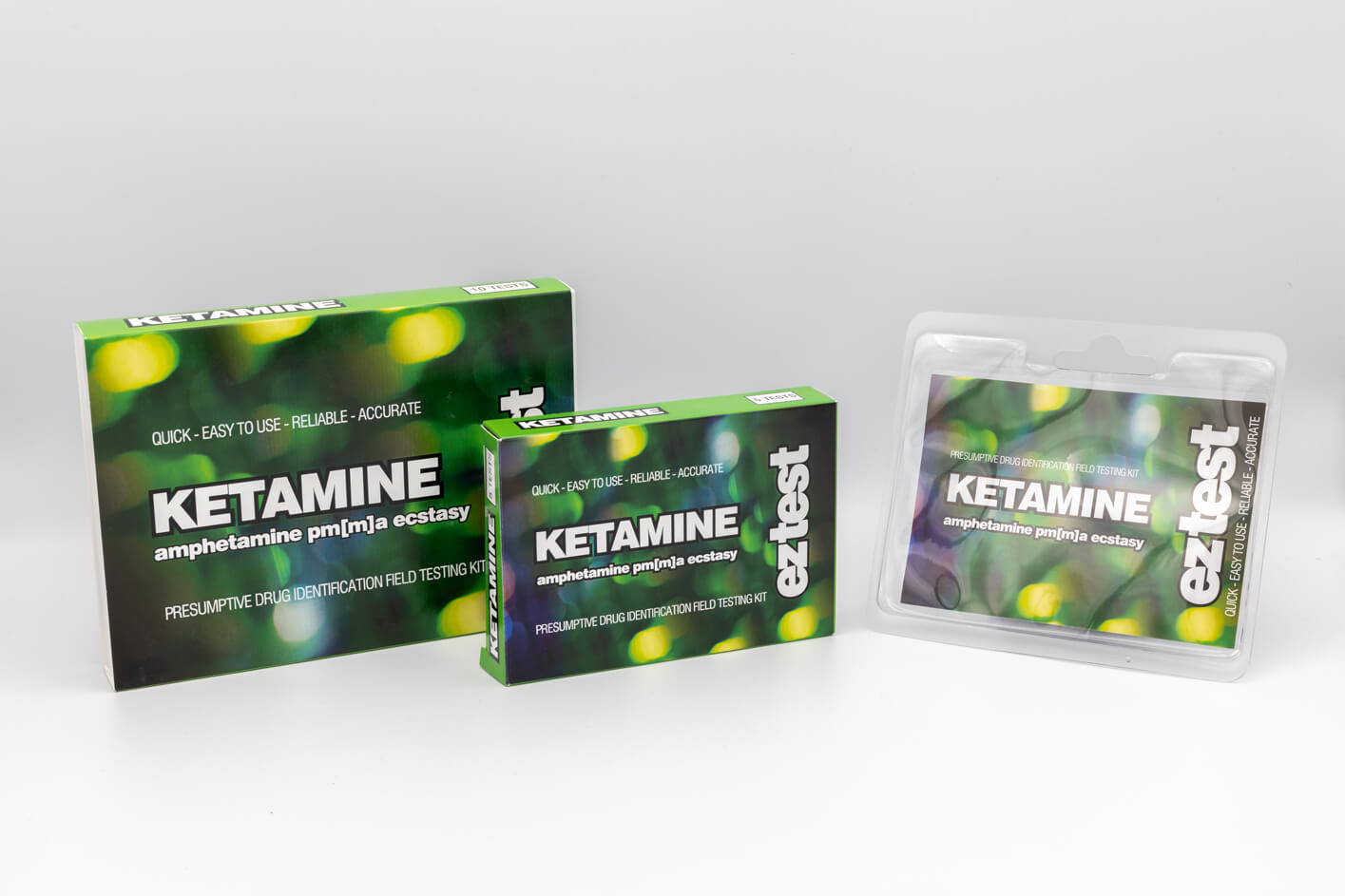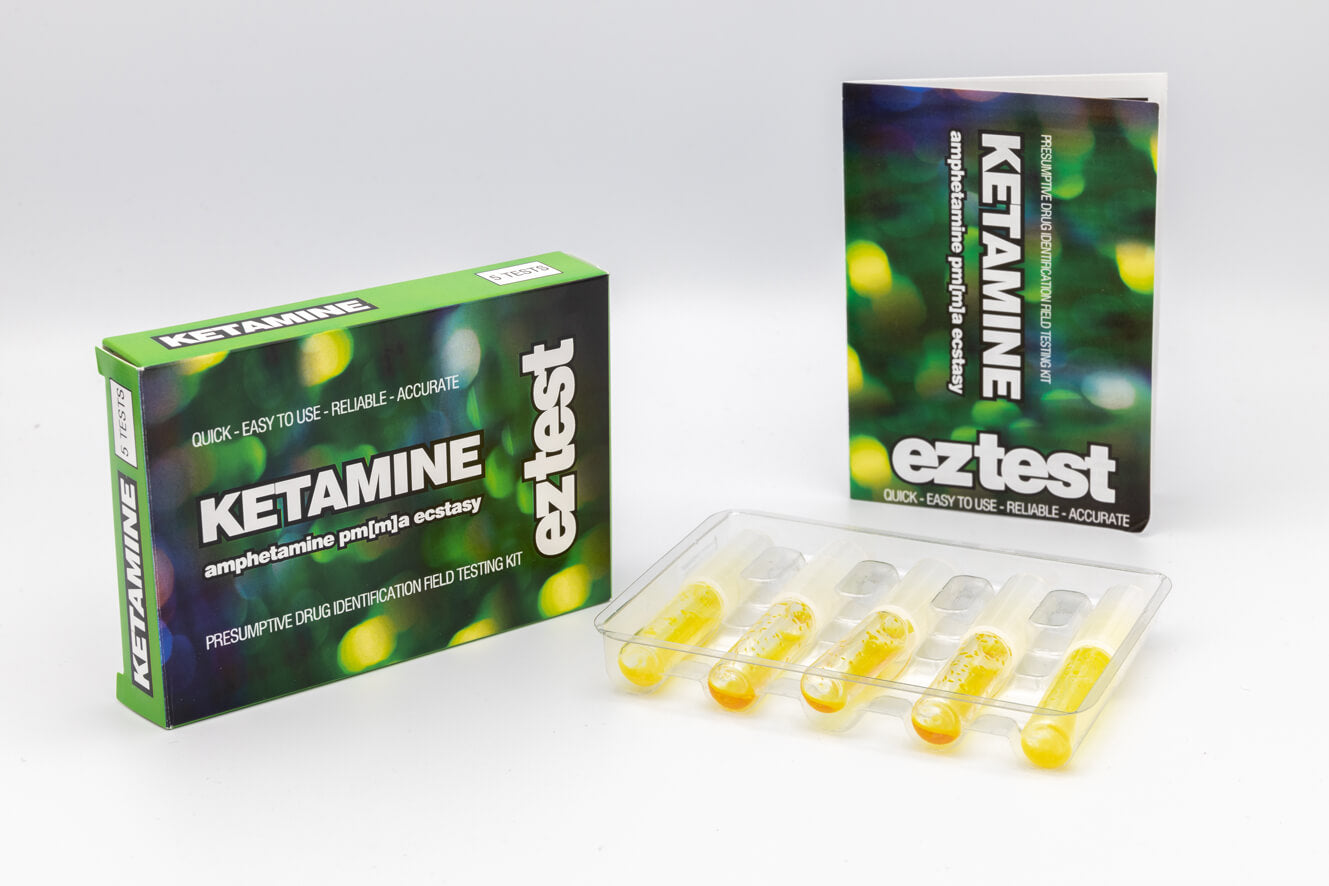EZ Test Kits
Ketamine Drug Testing Kit
Ketamine Drug Testing Kit
Couldn't load pickup availability
- Safe Shopping
- Discreet Shipping
- Secure Payments
 Multi-Substance Detection: Indicates the presence of several substances including Ketamine, Ecstasy, and Amphetamines.
Multi-Substance Detection: Indicates the presence of several substances including Ketamine, Ecstasy, and Amphetamines.
 Simple and Quick: Get results in a few minutes comparing reaction colour against our results colour chart.
Simple and Quick: Get results in a few minutes comparing reaction colour against our results colour chart.
 Testing at home: EZ Test Kits enable you to test substances in the comfort and safety of your own home.
Testing at home: EZ Test Kits enable you to test substances in the comfort and safety of your own home.
The Ketamine, Amphetamine, PM(M)A, Ecstasy Drug Testing Kit by EZ Test helps you to identify a wide range of substances, including Ketamine, Ecstasy (MDMA, and related substances such as MDA and MDE), Amphetamine, PMA, and more. This testing kit, using a specialized reagent, provides a colour change to give an indication of what substances may be present in the sample.
What Does the Ketamine Kit Detect?
What Does the Ketamine Kit Detect?
The Ketamine drug testing kit is useful for identifying a variety of substances, including:
- Ketamine: a dissociative anaesthetic widely used in both human (from surgical use to neonatal intensive care) and veterinary medical applications.
- Ecstasy (MDMA, MDA, MDE, MBDB): Recreational entactogenic stimulants popular for a variety of recreational uses.
- (Meth)amphetamine: stimulant drugs often used to improve alertness and give euphoric affects.
- PM(M)A: A substance often mistaken for MDMA but much more dangerous. The effects of PM(M)A take far longer than MDMA to kick in, leading to early redosing and overdoses are much more likely.
- 2-Amino-Indane: A stimulant sometimes used as a legal substitute for ecstasy
- Methylphenidate: Also known as Ritalin, this is a prescription stimulant often used in the treating of ADHD.
How it Works
How it Works
The Ketamine testing kit uses the Mandelin reagent sealed inside a glass ampoule. When a small sample of the substance is added to the ampoule, it reacts with the chemicals and changes colour. The resulting colour can then be compared to the chart provided to give an indication of which substances may be present.
Mandelin’s reagent is made using ammonium vanadate in water with concentrated sulphuric acid. The exact nature of its reaction with ketamine is not well understood.
Reagent Testing
Reagent Testing
What is Reagent Testing?
Reagents are chemicals (usually acids or bases) which react in a known way to the suspected contents of a sample. All reagents sold by EZ Tests are known to change colour according to the substance that they are testing for.
Reagent testing is the process of adding an unknown material to a chemical reagent to observe the reaction that follows. It is a form of forensic chemistry which aims to rule in and out certain chemicals or groups of chemicals with various reagents until the contents is known. Reagent testing does not guarantee the presence of any particular drug or the absence of any others.
Why is Reagent Testing Important?
Illicit drugs are made, sold and (often) consumed with no quality testing or indication of what they really contain. Unfortunately, this can result in bad experiences, anxiety and serious harm. Reagent tests offer a quick and easy way to get some idea of what you may be taking.
They are not perfect, and they do not replace professional laboratory testing services, but they can be vital and may save a life.
What are the Limitations of Reagent Testing?
Reagent testing cannot guarantee that a sample contains a certain drug, and it cannot guarantee that there is no other drug present. Despite testing, it is possible that a different chemical reacted similarly to the expected reaction, causing a false positive. It is also possible that there is a drug in your sample which does not react to the reagent in question, or the second reaction is obscured by the drug you expect to find, and therefore is not found in the tests. It is always a good idea to use three or more different tests on any sample, to reduce the risk of this happening.
If you are using a purity test then it is vital that you are testing a known quantity of the drug (and that this amount is the same as the amount specified in the instructions) or else the degree of colour change will not correspond to the purity of the sample.
Storage
Storage
The ampoule in which the reagents are supplied is made out of clear glass to allow reliable identification of colour changes. To ensure that the shelf life of your reagents is as long as possible, please store them in a cool, dark place such as your fridge or cool cupboard.
Safe Disposal
Safe Disposal
After testing, please ensure that the ampoule and any leftover sample are disposed of safely to prevent contamination or harm. Proper disposal helps protect yourself and others from potential exposure to harmful substances.
If the reagent comes into contact with your skin, you should wash the affected area with soap and lukewarm water for 10-15 minutes. If the reagent comes into contact with your eyes you should adhere to the same process with lukewarm water only.
Why Choose the Ketamine EZ Test Kit?
Why Choose the Ketamine EZ Test Kit?
This testing kit for Ketamine is perfect for those looking to analyze their samples and identify a wide variety of substances quickly and efficiently. Whether you're testing for Ketamine, Ecstasy, or PMA, this test offers a fast and easy method to get an idea of what might be present in a substance.
- Versatile Testing: Identifies multiple common substances such as Ketamine, Ecstasy, and various amphetamines.
- Safety Awareness: A useful tool for consumers who want an indication of what they may be consuming, particularly with substances that can be easily mistaken for one another, like MDMA and PMA.
- User-Friendly Design: With simple instructions and clear results, this Ketamine test kit is suitable for anyone, requiring no technical knowledge to use effectively.
Please note some ampoules may arrive with a yellow colour to the contents. These kits are suitable for use.
Share
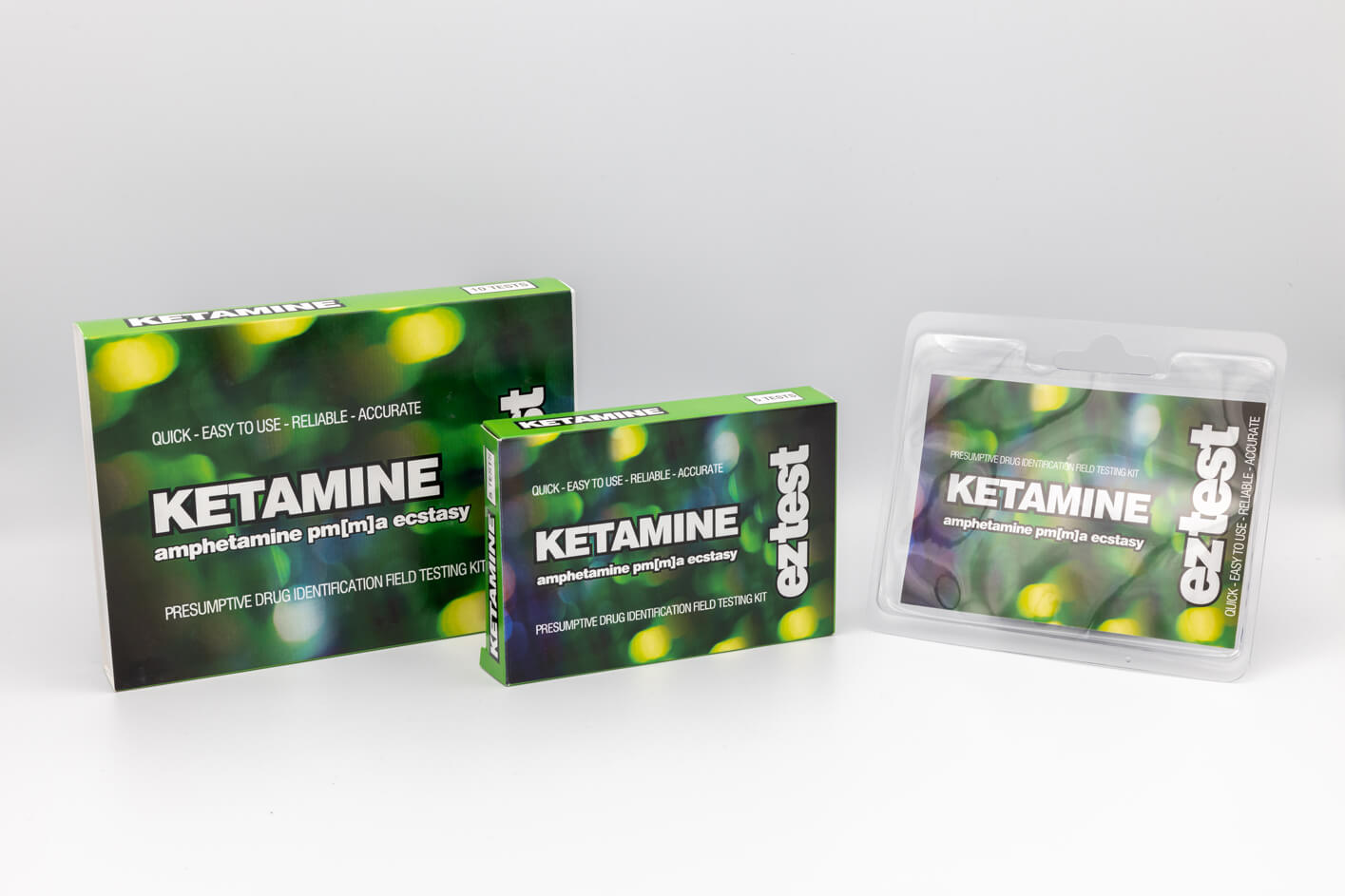
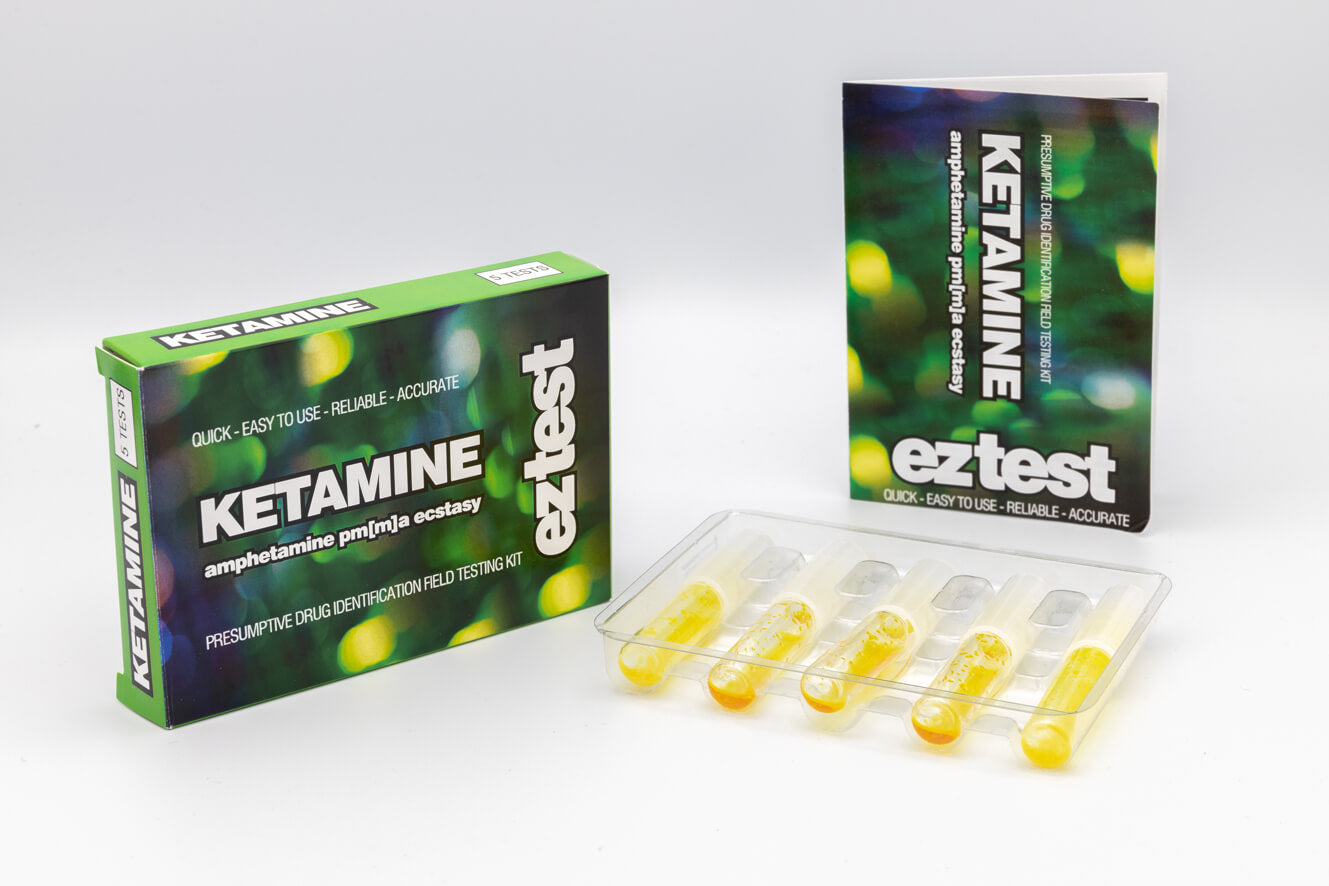
-
IMPORTANT WARNING!
- EZ Test Kits do not provide any information about how much of a substance has been detected, and accordingly do not indicate a safe amount of the drug to take.
- The positive result for presence of one drug does not mean the absence of other (potentially more dangerous) substances.
- There is potential for technical or procedural errors. Please follow the instructions carefully.
- Other factors and substances may cause false results (either false negative or false positive results for the drug you are expecting to find). These reagents are indicative only and do not provide definitive results.
- A negative result does not rule out the presence of any drug. It may be present in quantities lower than the limit of detection, leading to an apparent negative result.
- If you are unclear of your results and would like a full analysis of the substance you have please see our article on laboratory testing.
- A positive or negative test result is NOT an indication that the substance being examined is safe to use. No drug is completely safe even if it is pure. EZ Test does not condone the use of illicit drugs.
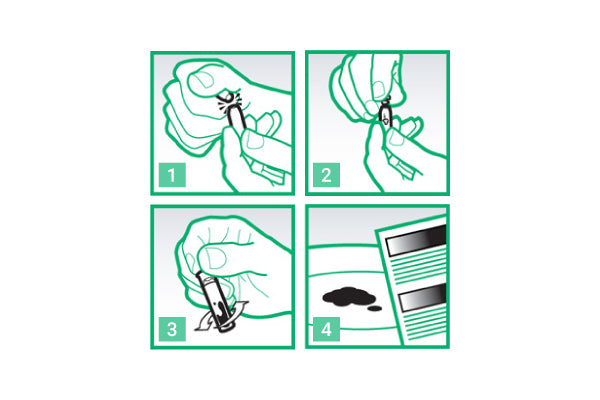
Instructions
- Crack Open the Ampoule: Carefully open the glass ampoule included in the kit.
- Insert the Sample: Add a small portion of the substance you wish to test. For reagent testing we recommend using only a few milligrams of your sample – for example a few shavings from a pill or a few crumbs of powder. For samples absorbed onto blotter paper we recommend cutting off about an eighth of the tab to test. For liquid samples a drop or two will suffice.
- Mix the Chemicals: Place the plastic lid on the ampoule and shake well to ensure the sample fully reacts with the reagent. Make sure that the lid is secure before shaking to prevent spillage of caustic reagents.
- Compare the Colour Change: Observe the colour change compare it with the provided colour chart to identify the substance. Always perform reagent testing in bright white light and always examine the colour change against a white background.
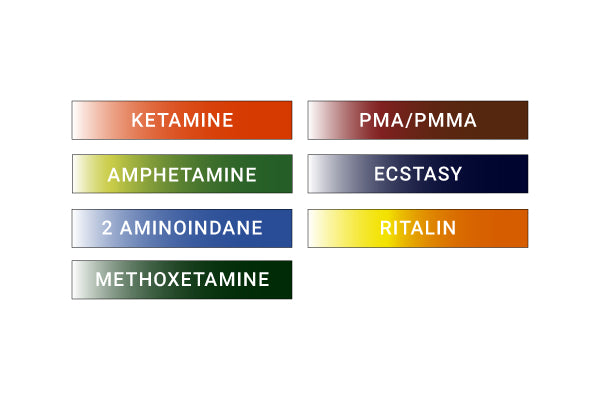
Interpreting the results
- Ecstasy (MDMA, MDA, MDE, MBDB): Shows a dark purple/black colour change indicative of these substances.
- (Meth)amphetamine: Will display a green colour change with amphetamine and a yellow/green colour with methamphetamine, allowing you to distinguish between these stimulants.
- Ketamine: The reagent reacts specifically to Ketamine to produce a red coloured product.
- PMA: Shows a brown/rust colour reaction with PMA and PMMA, differentiating them from MDMA.
- 2-Amino-Indane: Identifiable through blue result.
- Methylphenidate (Ritalin): Will react with a yellow/orage to indicate the presence of this substance.
Useful Links
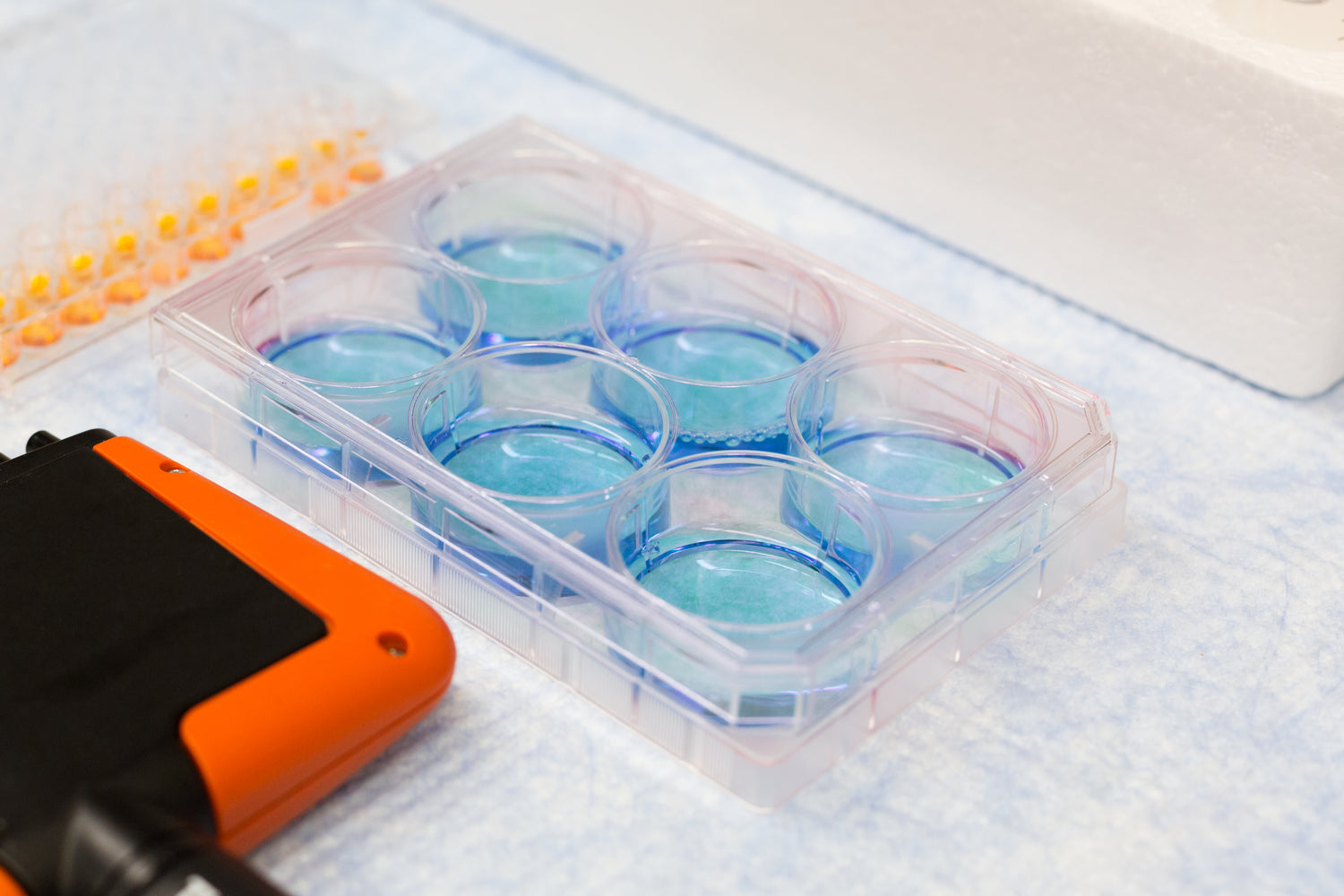
drug science reagent testing information
Any type of recreational drug use carries a degree of risk, both long-term and short-term. This is true for legal recreational...
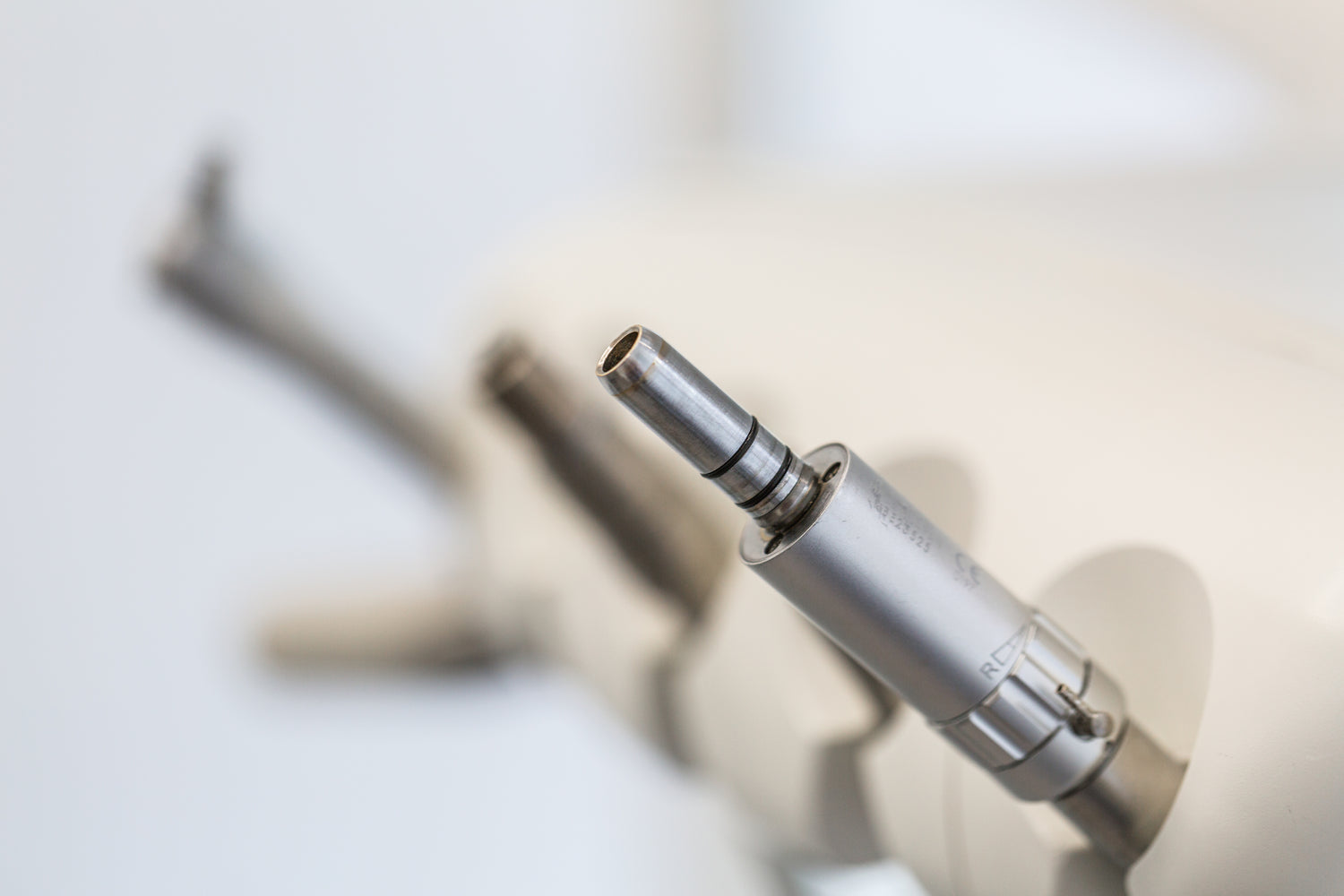
Medical uses of ketamine
Ketamine is a medication that doctors use as an anesthetic to induce loss of consciousness. Under the Controlled Substances Act, health experts...

